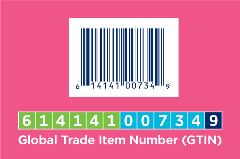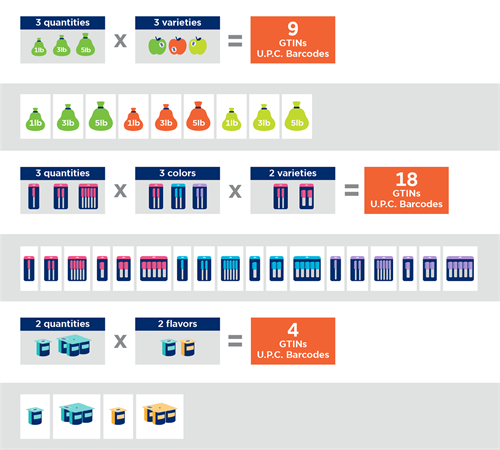With e-commerce thriving, there have never been more sales opportunities available to small business owners with a killer product. To fully take advantage of the global marketplace, business owners need to make sure their products have authentic identification numbers, which are then encoded into a UPC (Universal Product Code) barcode.
Whether you are selling online or in a store, by properly identifying your product with a barcode you can:
1. Keep track of your inventory.
2. Ensure customers find your products easily.
3. Meet the requirements of major retailers like Walmart, Target, Amazon, and eBay.
Here are some barcoding basics that will help you launch your products the right way.
UPC Barcodes and GTINs
Some retailers’ supplier guidelines suggest the use of Global Trade Item Numbers (or GTINs), which are the numbers encoded into a barcode that uniquely identify a product when it is listed online, or is read by a barcode scanner. A UPC is the most common type of barcode symbol—you see it on products every day and they are used at a store’s checkout counter.

Together, a UPC barcode and a product’s GTIN make it easy for businesses to track a product. The barcode containing your GTIN is scanned through each stop the product makes after leaving the manufacturing site. There’s a big opportunity for e-commerce businesses to benefit from identifying products with GTINs, as they help your product surface in more search engine results online. Online marketplaces consider authentic GTINs so helpful to their operations that they have started hiding product listings if they are not identified with a proper GTIN.
While there are third party barcode companies that allow you to simply purchase barcodes and the identification numbers encoded in them, retailers require companies to construct authentic identification numbers that specifically link your brand to your product. Purchasing ready-made barcodes or GTINs may mean you’re labeling your product with another company’s identification number—a short term solution that, in the long run, can cause confusion, lead to unnecessary costs and hinder your company’s growth.
Building Your Identification Numbers and Barcodes
To create GTINs and UPC barcodes for your products, the first step is to get a GS1 Company Prefix, which can be acquired through a license agreement with GS1 US, the not-for-profit information standards organization. The Company Prefix makes up the first few numbers of a GTIN and provides a numeric identity for your company.
Next, utilize the tools available to help you create your own GTIN by combining your prefix with a unique product number that you assign. You will need to create a different GTIN for each product variation you sell. Product variations, such as different packaging quantities, colors, scents or flavors, require unique GTINs to distinguish one variation from another. Business owners find it easy to manage any costs associated with barcoding by first estimating how many barcodes they need using a barcode estimator tool. The examples below show how product variations factor into the calculation of barcodes.

While many small businesses print their own barcodes successfully using GS1 US tools, some also work with certified solution providers that specialize in product set-up and can offer a variety of services related to barcoding.
Barcode Placement
Now you’ve got your barcodes but you might be wondering how exactly to place them on your product. A barcode can be printed and attached to a product, or incorporated into the product’s package design. Barcode placement can impact the ability of scanners to read your barcode. To optimize scanning, barcodes should generally be placed in the lower right-hand section of the back of the package. Avoid the edge of the package, and allow enough white space surrounding the barcode to help to ensure a clean scan. It’s also critical that the printed surface be smooth so nothing interferes with the scan.
By properly identifying and barcoding your products, you are on your way to creating a better shopping experience for your customers, too. For additional help with barcoding, please visit www.gs1us.org/industries/small-business.